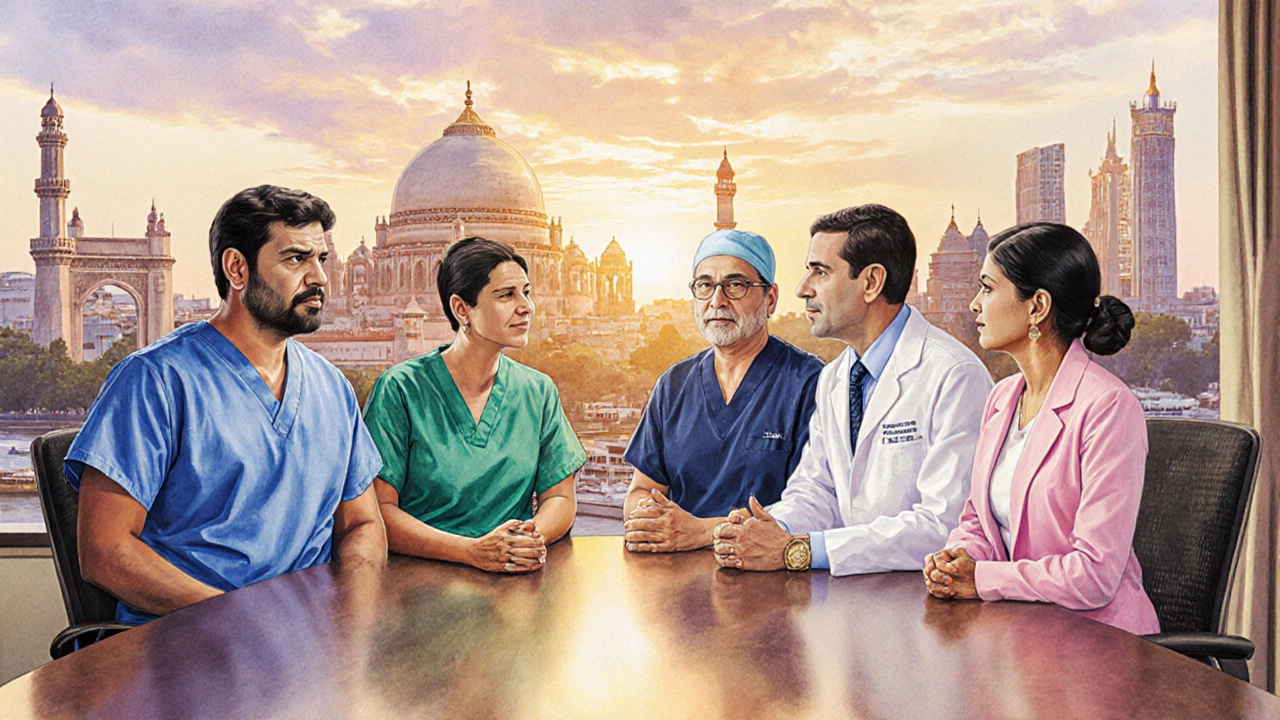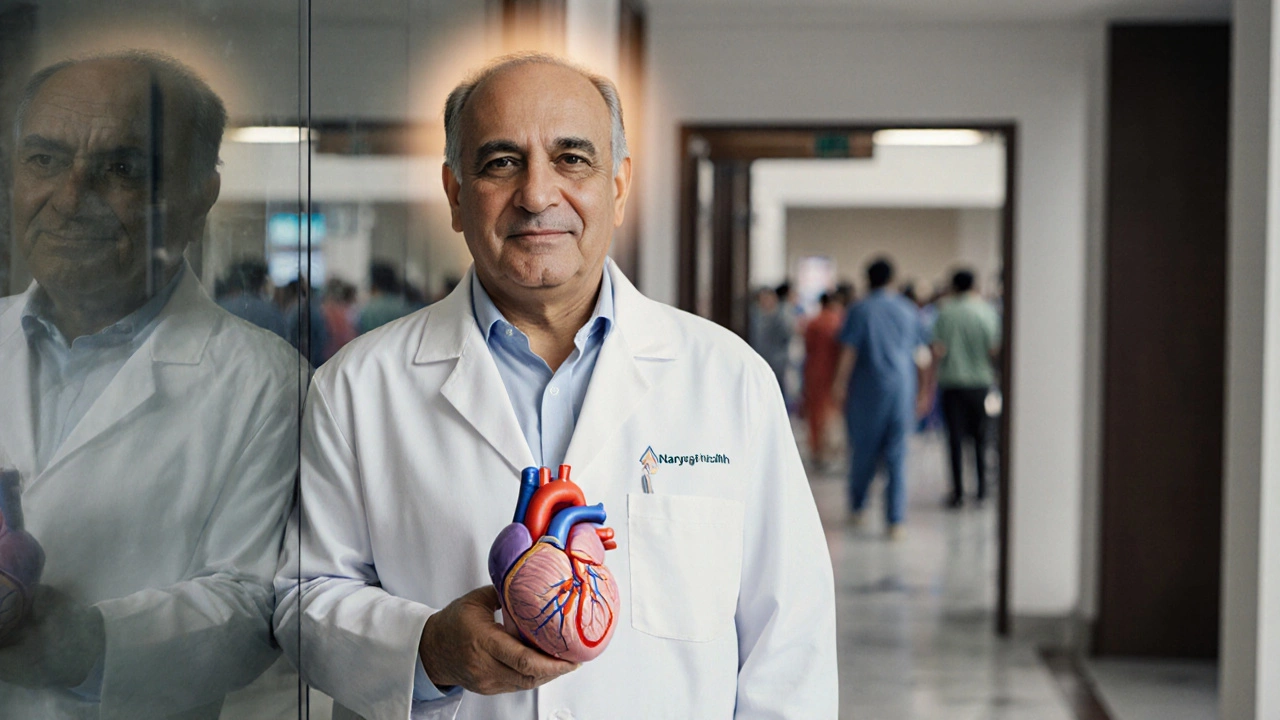Highest Paid Doctors in India 2025 Salary Estimator
Estimated Annual Earnings
Top Earning Doctors in India (2025)
Devi Shetty
Cardiac Surgery
₹15+ CroreNaresh Trehan
Cardiovascular Surgery
₹10-12 CroreRanjit Roy
Oncology (Radiation)
₹8-9 CroreYashdeep Singh
Neurosurgery
₹7-8 CroreKey Takeaways
- Dr. Devi Shetty is widely reported as the highest‑paid doctor in India in 2025.
- Cardiac surgeons and specialised interventional doctors dominate the top‑earning list, with annual incomes ranging from ₹6crore to over ₹15crore.
- Revenue comes from private practice, hospital ownership, medical‑device royalties, and consulting fees.
- Geographic hubs like Bengaluru, Delhi‑NCR, and Mumbai offer the most lucrative patient pools and corporate partnerships.
- Building a high‑earning medical career typically requires a combination of niche expertise, brand building, and strategic business moves.
Who Holds the Top Spot?
When you hear the name Devi Shetty, you probably think of affordable heart surgery. Yet his net worth, estimated at over ₹12billion, places him at the very top of the doctor‑salary ladder. Shetty founded Narayana Health in 2000, turning a single cardiac unit into a network of 30+ hospitals. The bulk of his earnings originate from:
- Equity stakes in Narayana Health (≈30% ownership).
- Patents and royalties for low‑cost cardiac devices.
- High‑margin private surgeries for affluent patients and medical tourists.
- Consultancy contracts with insurance firms and government health schemes.
Industry analysts from the Indian Medical Council’s 2024 earnings survey estimate his annual income at roughly ₹15crore, eclipsing other specialists.
Other Doctors Who Earn Near the Top
While Shetty leads the pack, a handful of peers consistently rank among the highest earners. Their fortunes stem from similar mixes of clinical work, hospital leadership, and commercial ventures.
| Doctor | Specialisation | Primary Institution | Estimated Annual Earnings (₹crore) |
|---|---|---|---|
| Devi Shetty | Cardiac Surgery | Narayana Health | 15+ |
| Naresh Trehan | Cardiovascular & Thoracic Surgery | Medanta - The Medicity | 10‑12 |
| Ranjit Roy | Oncology (Radiation) | Apollo Cancer Hospital | 8‑9 |
| Yashdeep Singh | Neurosurgery | Max Super Specialty Hospital | 7‑8 |
| Ashok Kumar | Plastic & Reconstructive Surgery | Sir Ganga Ram Hospital | 6‑7 |

Why These Specialities Command Premium Pay
Three factors drive the salary gap between, say, a general practitioner and a cardiac surgeon:
- Procedural Complexity: High‑risk surgeries require years of fellowship training and low error tolerance, allowing doctors to charge premium fees.
- Equipment & Infrastructure Costs: Operating rooms for heart or brain surgeries involve expensive machinery (e.g., heart‑lung bypass, intra‑operative MRI). Hospitals pass a portion of that cost to the surgeon’s fee.
- Patient Demographics: Affluent patients and medical tourists are willing to pay₹5‑10lakh per procedure, especially for minimally invasive techniques.
These same forces apply to interventional radiology, orthopedic joint replacement, and cosmetic surgery, which explains their presence in the earnings table.
How Geography Shapes Doctor Earnings in India
Location matters almost as much as speciality. The three metros-Bengaluru, Delhi‑NCR, and Mumbai-host the highest concentration of private hospitals, corporate clinics, and health‑tech startups. A surgeon operating in these hubs can typically charge 20‑30% more than a counterpart in Tier‑2 cities.
Data from the Indian Health Services Annual Report 2024 shows average consultation fees:
- Bengaluru: ₹5,000-₹12,000 per visit (specialist)
- Delhi‑NCR: ₹4,500-₹11,000 per visit
- Mumbai: ₹5,200-₹13,000 per visit
- Tier‑2 (e.g., Pune, Jaipur): ₹3,000-₹7,000 per visit
Beyond fees, metro‑based doctors gain easier access to research grants, global conference invitations, and brand‑building platforms-all of which boost earning potential.
Blueprint for Building a High‑Earning Medical Career
If you’re a doctor aiming for the top of the pay scale, consider these practical steps:
- Choose a High‑Demand Niche: Cardiology, neurosurgery, orthopedics, and cosmetic surgery consistently rank highest.
- Earn International Fellowships: Credentials from US or UK institutions add credibility and enable premium consulting fees.
- Develop a Personal Brand: Publish case studies, speak at conferences, and maintain an active professional social media presence.
- Invest in Hospital Ownership or Partnerships: Equity stakes turn clinical earnings into recurring revenue.
- Leverage Medical‑Device Innovation: Patents and royalties can eclipse clinical income within a few years.
- Target Medical Tourism: Align with agencies that bring international patients to your clinic.
Each of these moves creates a separate income stream, reducing reliance on a single source and increasing overall earnings.

Common Pitfalls and How to Avoid Them
High earnings attract scrutiny. Here are mistakes many high‑earning doctors regret:
- Over‑Commercialisation: Pursuing profit at the cost of patient safety can lead to legal action and reputation loss.
- Neglecting Continuing Education: Medicine evolves fast; outdated skills can erode demand.
- Ignoring Tax Planning: Without proper structuring, doctors can lose up to 30% of earnings to taxes.
- Failure to Diversify: Relying solely on procedural fees makes you vulnerable to policy changes in insurance.
Proactively hiring a financial advisor, maintaining transparent billing, and staying current with clinical guidelines mitigate these risks.
Future Outlook: Will the Rankings Change?
The medical landscape in India is shifting. Tele‑medicine platforms, AI‑driven diagnostics, and government‑backed health insurance schemes are reshaping revenue models. Doctors who embrace digital health-offering virtual follow‑ups, AI‑assisted treatment plans, or remote surgery monitoring-could see new high‑earning avenues.
However, the core drivers-specialised expertise, procedural rarity, and patient willingness to pay-remain stable. Expect the next list of top earners to still be dominated by cardiac, neuro, and cosmetic surgeons, but with a growing presence of tech‑savvy practitioners who blend clinical work with health‑tech entrepreneurship.
Frequently Asked Questions
Who is officially recognized as the highest‑paid doctor in India?
Industry surveys and media reports consistently name Devi Shetty as the top‑earning physician, mainly due to his ownership of Narayana Health and ancillary medical‑device royalties.
What are the typical earnings for a specialist surgeon in India?
A senior specialist surgeon in a metro hospital can earn between ₹6crore and ₹12crore annually, combining salaries, procedure fees, and profit‑sharing.
Does location affect a doctor's income?
Yes. Doctors in Bengaluru, Delhi‑NCR, and Mumbai typically charge 20‑30% higher fees and attract more corporate partnerships than those in Tier‑2 cities.
Can a doctor become wealthy without owning a hospital?
Absolutely. Many doctors boost earnings through patented devices, consulting contracts, and tele‑medicine platforms that generate recurring revenue.
What steps should a young doctor take to increase future earnings?
Select a high‑demand speciality, pursue international fellowships, build a strong professional brand, explore equity partnerships, and stay ahead of health‑tech trends.





Write a comment